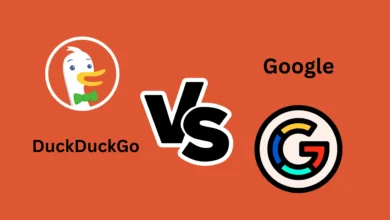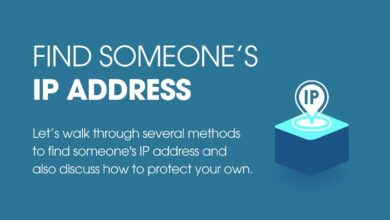What is Remote IoT? A Complete Guide

The Internet of Things (IoT) is transforming businesses across all industries by connecting devices and equipment to the Internet. This allows for remote monitoring, data collection, and management from anywhere globally. Remote IoT specifically refers to leveraging internet-connected sensors, devices, and systems to track, analyze, and control infrastructure, assets, and processes remotely in real time.
How Does Remote IoT Work?
Remote IoT involves setting up an ecosystem of connected devices, connectivity protocols, data processing platforms, and user interfaces:
IoT Sensors and Devices
Sensors and devices are embedded or installed on equipment, infrastructure, assets, etc. to collect data. This includes:
- Temperature, pressure, vibration, location sensors
- Cameras, beacons, RFID tags
- Industrial machines, home appliances
They can detect changes in status, environment, performance, etc., and generate valuable data.
Connectivity
The sensor data is transmitted to cloud platforms for analysis via communication protocols like:
- Cellular networks (4G, 5G)
- Wi-Fi
- Bluetooth
- Satellite
- LPWAN (LoRaWAN, NB-IoT)
Data Processing
Specialized algorithms and analytics tools process the raw sensor data to turn it into meaningful insights. These include:
- Machine learning
- Artificial intelligence
- Predictive analytics
- Digital twin technology
Edge computing can also enable some local, real-time analysis.
User Interfaces
Insights from the IoT ecosystem are delivered to human users via:
- Dashboards
- Mobile/web apps
- SMS/email alerts
- Voice assistants
Enabling remote monitoring, control, optimization, and automation.
Benefits of Remote IoT
Leveraging this connected IoT infrastructure for remote capabilities delivers numerous valuable business benefits:
1. Reduced Downtime
Predictive maintenance enabled by remote monitoring significantly minimizes equipment downtime by detecting problems early. This prevents failures and allows proactive maintenance.
2. Operational Efficiency
Real-time remote data allows businesses to streamline operations, processes, and supply chains for improved productivity. Resources can also be optimized for efficiency.
3. Enhanced Safety
In hazardous environments, IoT sensors can identify risks like gas leaks, allowing for rapid incident response remotely via alerts and automation.
4. Flexibility
With remote access, users can monitor and manage systems from anywhere globally via mobile apps. No need for on-site presence.
5. Cost Savings
From optimizing energy consumption to minimizing maintenance expenses, IoT delivers significant long-term cost savings.
6. Informed Decisions
Valuable data-driven insights allow businesses to make smarter, more profitable decisions based on real-world patterns and predictive intelligence.
7. New Revenue
Offering remote monitoring can become a source of new revenue for hardware manufacturers via value-added services and data insights.
Challenges in Implementing Remote IoT
While delivering immense value, scaling up remote IoT has some key barriers:
Security Concerns
Mission critical infrastructure being accessed remotely raises cybersecurity risks of hacking and data theft. Robust end-to-end encryption and authentication are essential. Updates must be managed remotely as well.
Integration Complexities
Connecting new smart devices to old legacy enterprise systems can require custom middleware solutions. Expert technical support is crucial for smooth integration.
Connectivity Constraints
For remote assets in extreme locations, connectivity via cellular and satellite networks can be challenging. Long range LPWAN options may be required.
Data Management
As device count and data volumes scale exponentially, IoT platforms need to handle big data seamlessly without Information overload or lagging analytics.
Skill Shortages
Most organizations lack personnel with the right skill sets to design, develop, and maintain complex IoT ecosystems spanning hardware, embedded systems, cloud software, and networks.
Real-World Remote IoT Applications
Despite the challenges, leading innovators globally across sectors are implementing remote IoT to transform operations:
Smart Manufacturing
Industrial IoT enables manufacturers to gather machine and production line data remotely. This allows for:
- Predictive maintenance to minimize downtime
- Automated anomalies and issues detection
- Optimizing assembly line speeds, inventory, etc. for efficiency
- Remotely adjusting equipment settings
- Overall – increased output and lower costs
Smart Agriculture
Farmers are deploying IoT systems like smart irrigation with:
- Real-time field data on soil moisture, crop health, etc.
- Automated irrigation for optimizing water usage
- Early disease and pest detection for preventative action
- Tracking livestock location and well-being
Driving sustainable precision agriculture with higher yields.
Fleet Management
Connecting vehicles with GPS and IoT sensors empowers fleet operators to:
- Remotely monitor location and condition
- Track fuel consumption and efficiency
- Receive alerts for preventative or break-down maintenance
- Optimise delivery routes and load balancing
Resulting in maximum asset utilization and minimum costs per shipment.
Energy Management
Electric utilities applying IoT to metering infrastructure can:
- Remotely read usage levels in real-time
- Using predictive analytics on usage patterns to improve demand forecasting
- Dynamically balance loads and pricing for stability
- Identify technical issues requiring maintenance
enabling optimized power generation and distribution while minimizing waste.
Smart Buildings
Building owners and managers can remotely track and control:
- HVAC systems using occupancy levels and weather data for efficiency
- Lighting systems for cost and sustainability benefits
- CCTV surveillance for improved security
- Door access systems to allow entry on premises
- Pool/water leakage monitoring for preventative maintenance
Through a centralized and data-driven command center optimizing operations campus or city-wide.
Key Takeaways on Remote IoT
- Remote IoT leverages connected sensors, devices, and platforms to allow real-time tracking, monitoring, and managing of infrastructure, assets, and processes remotely.
- Critical components include sensors, connectivity, data analytics, and user interfaces. Working together to unlock visibility and insights.
- Delivers immense benefits like reduced downtime through predictive analytics, increased efficiency via optimization, enhanced safety, and flexibility.
- Does face security, integration, connectivity, data, and skills-related challenges in scaling up.
- Regardless, is enabling transformation across manufacturing, agriculture, fleet management, energy, buildings, and other industries globally.
Frequently Asked Questions About Remote IoT
Still have questions about the what, why, and how of remote IoT? Here are answers to some commonly asked questions:
What are the key components of a remote IoT system?
The four core components are:
- Sensors and Devices – To collect data at field sites/assets
- Connectivity Protocols – To transmit data like cellular, WiFi, etc.
- Data Processing Platforms – Cloud-based to analyze data
- User Interfaces – Like mobile apps to access insights
How is data from remote locations transmitted back to analysis platforms?
IoT connectivity relies on communication technologies like:
- Cellular networks – 3G, 4G, 5G
- Wi-Fi
- Bluetooth
- Low Power Wide Area Networks – LoraWAN, NB-IoT
- Satellite networks – Where cellular is unavailable
To securely transmit data to centralized cloud platforms for processing.
What kind of data analysis happens in remote IoT systems?
Sophisticated analytics like machine learning, digital twins, etc. turn IoT sensor data into value-delivering insights. Key techniques include:
- Descriptive analysis – Identifying patterns
- Diagnostic analysis – Determining why something occurred
- Predictive analysis – Forecasting future outcomes
- Prescriptive analysis – Recommending actions
How does remote IoT enable cost savings for a business?
Cost savings from a remote IoT strategy come from:
- Optimizing resource usage and inventories
- Lower equipment downtime through predictive maintenance
- Automating tasks done manually earlier
- Increased operational efficiency and productivity
- New revenue streams from value-added data services
What are some challenges faced in remote IoT?
Key challenges involved include:
- Cybersecurity threats of hackers or data theft
- Seamlessly integrating new IoT devices with legacy IT systems
- Managing exponential growth in devices and data volumes
- Connectivity issues in remote terrain lacking cellular signals
- Hiring personnel with appropriate IoT skills
What industries can benefit the most from remote IoT?
Remote IoT delivers immense value across sectors like:
- Manufacturing – With predictive maintenance of machinery
- Energy – Optimising power generation and distribution
- Agriculture – Enabling precision farming for farmers
- Transportation – Fleet tracking and management
- Buildings – For operational efficiency
Driving digital transformation through data-based insights.
So in summary, remote IoT has immense potential to drive competitiveness, sustainability, and resilience across key industries going forward. It delivers centralized real-time visibility and control along with transformational efficiency gains to businesses. With rapidly advancing platforms and connectivity, we have only seen the tip of the data-driven revolution that remote IoT promises.





